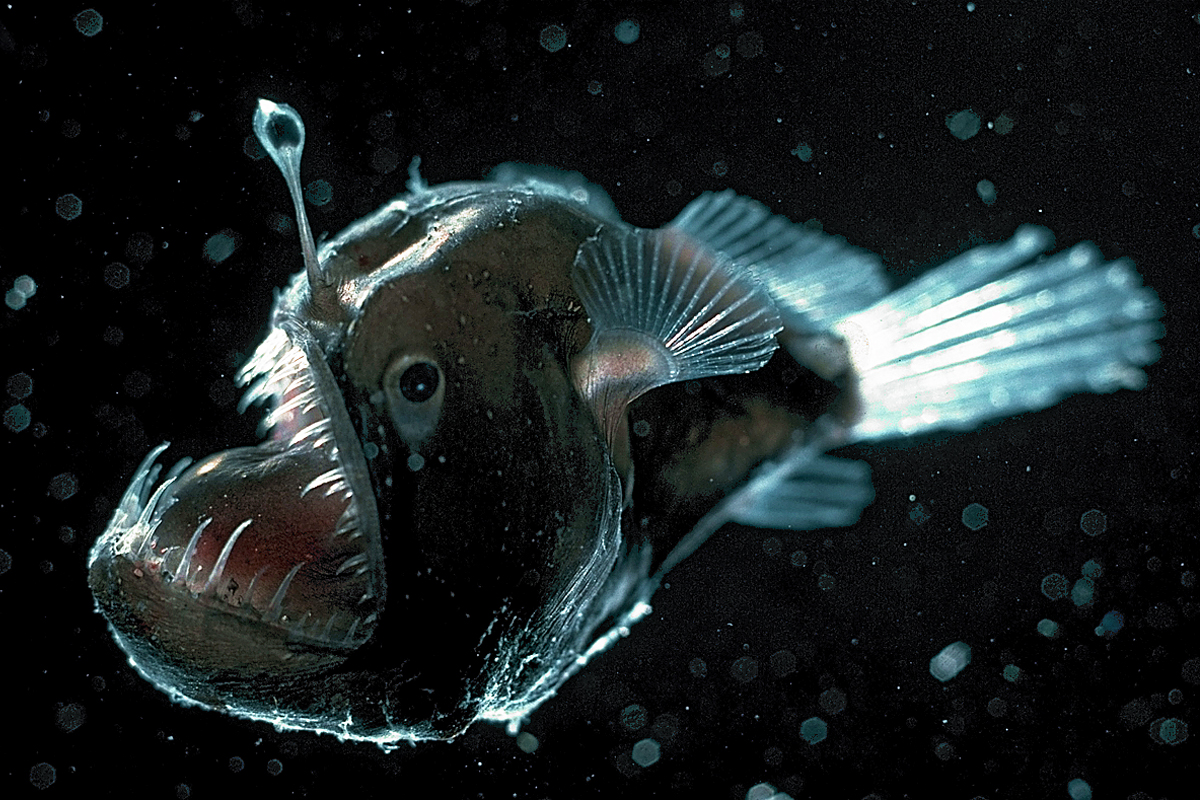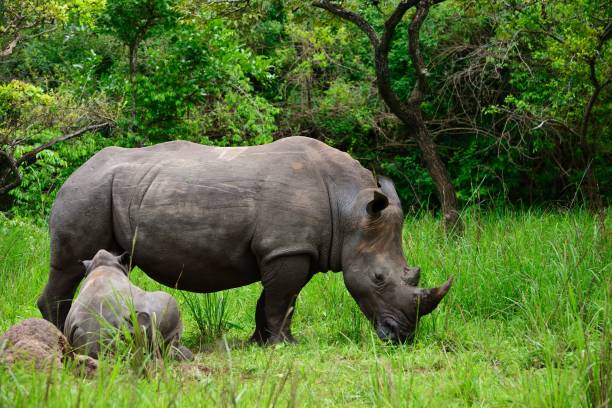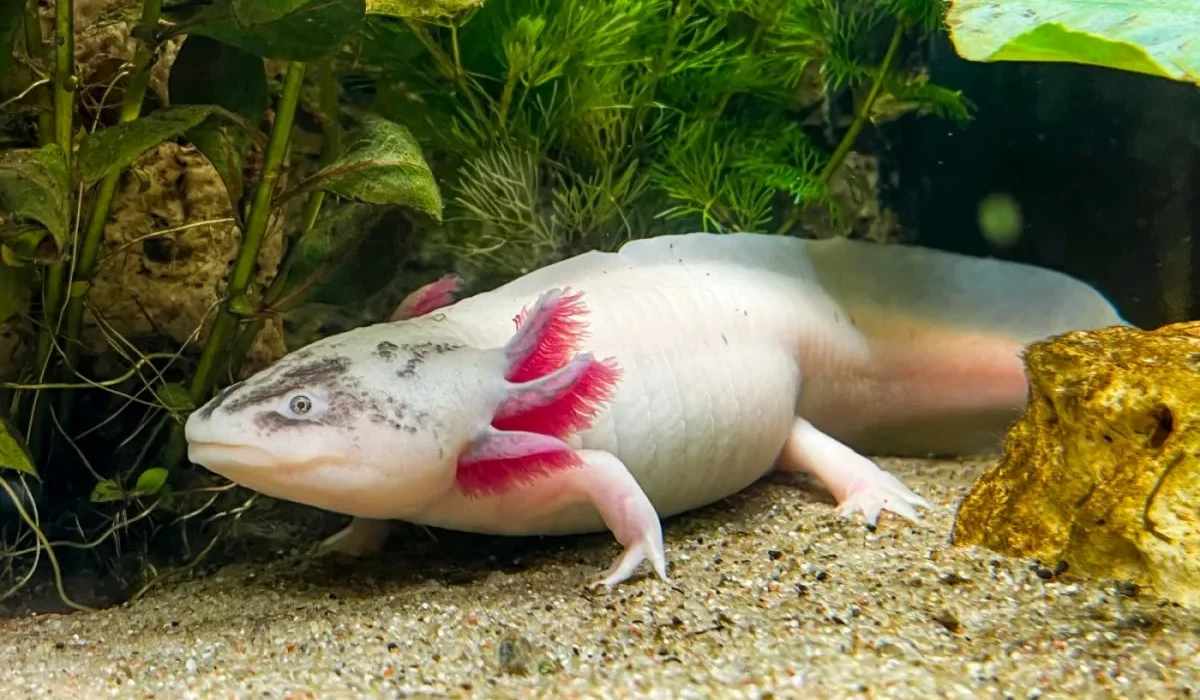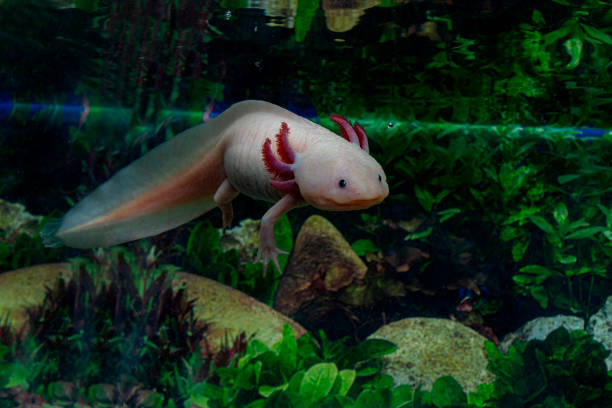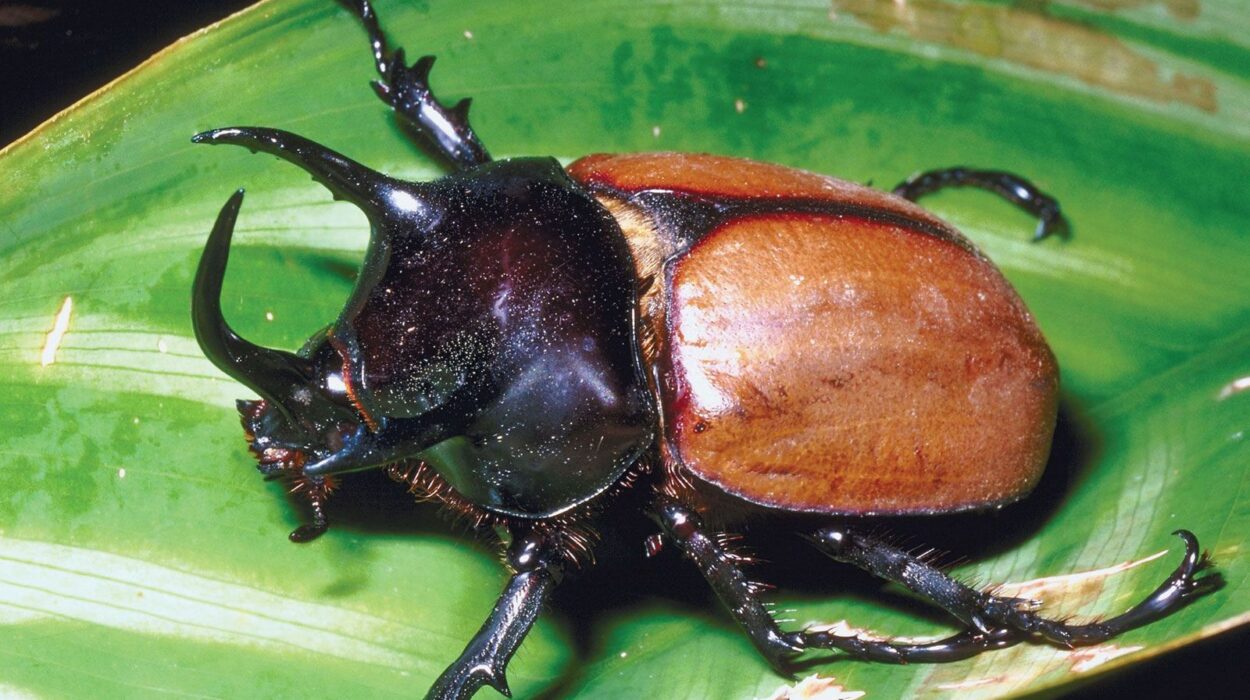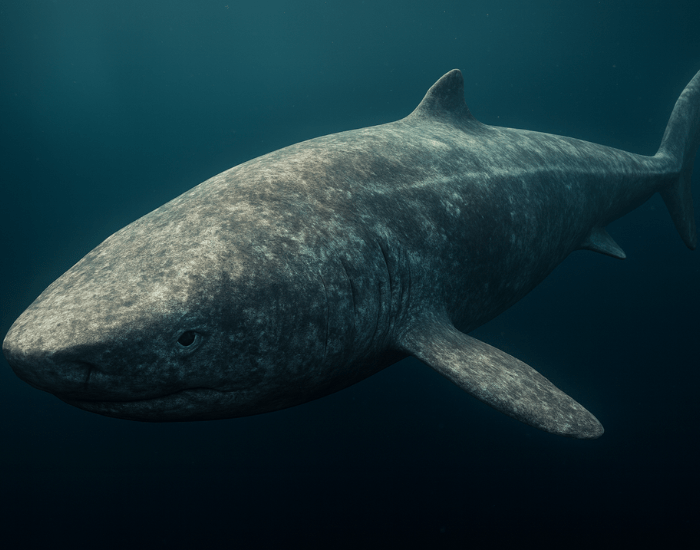Deep beneath the shimmering surface of the sea lies a world of darkness—vast, silent, and uncharted. Yet, within this black expanse, life glows. It pulses, flickers, and blazes like stars scattered through a midnight sky. This is the realm of bioluminescence—where creatures turn darkness into light, and survival becomes an art of radiance.
Bioluminescence, the natural ability of living organisms to produce light, is one of the most extraordinary phenomena in nature. It is not magic, though it feels like it. It’s chemistry—living chemistry—born from evolution’s brilliance. Deep-sea creatures use it to hunt, to hide, to love, and to communicate. Some flash to warn predators; others shimmer to lure prey. For many, light is life itself.
Let us dive into the glowing depths and meet fifteen extraordinary ocean dwellers who carry the fire of the deep—the masters of light who remind us that beauty and survival often shine brightest in the dark.
1. The Anglerfish – The Lantern of the Abyss
Few creatures embody the haunting beauty of the deep ocean like the anglerfish. Drifting through the inky blackness thousands of meters below the surface, the female anglerfish carries a glowing orb suspended from a fleshy filament that extends from her forehead—a biological lantern, lighting her way and luring her prey.
This bioluminescent beacon is home to symbiotic bacteria that produce light through chemical reactions involving luciferin and luciferase. To small fish and crustaceans, it looks like an inviting spark in the darkness. As they approach, jaws lined with razor-sharp teeth snap shut in a deadly instant.
Male anglerfish, tiny compared to their monstrous mates, live parasitically attached to the females, fusing their bodies and sharing blood—an eerie testament to love in the deep. Their lives are sustained by the light she carries, a living symbol of survival’s strange poetry.
2. Lanternfish – The Ocean’s Starry Blanket
If you could gaze at the ocean from below, you’d see something breathtaking: a slow-moving galaxy of light drifting through the darkness. Much of this cosmic shimmer comes from lanternfish—tiny creatures that account for an estimated 65% of all deep-sea fish biomass.
Lanternfish are named for the small, glowing photophores that line their bodies like constellations. These lights serve multiple purposes: camouflage, communication, and mate attraction. Some species use their glow to create “counter-illumination,” blending their bellies with the faint light from above so predators below can’t spot them.
Every night, billions of lanternfish migrate upward in the largest synchronized movement of animals on Earth—an invisible tide of light that nourishes the ocean’s ecosystems. Though small and humble, lanternfish are the quiet heartbeat of the glowing sea.
3. Firefly Squid – The Dancing Lights of Toyama Bay
Off the coast of Japan, every spring, an ethereal show unfolds in Toyama Bay. Thousands of firefly squid rise from the deep, their bodies shimmering electric blue in one of nature’s most spectacular light displays.
These small, three-inch cephalopods are covered in light-producing organs that flash rhythmically, creating waves of blue light that ripple through the water. The purpose of their glow is complex—it can be used to attract mates, distract predators, or communicate with other squid.
For centuries, the Japanese have celebrated their return as a symbol of renewal and mystery. On calm nights, the sea’s surface becomes a glowing dreamscape—a living aurora. The firefly squid reminds us that even in the depths, beauty thrives in motion and light.
4. Deep-Sea Dragonfish – The Red Light Predator
The deep-sea dragonfish is a creature that seems forged in myth—sleek, slender, and armed with a terrifying smile of needle-like teeth. But its most extraordinary weapon is invisible: it glows with red bioluminescence, a color that most deep-sea creatures cannot see.
This gives the dragonfish a unique evolutionary advantage. Using specialized photophores beneath its eyes, it emits red light to illuminate prey without being detected. It’s a biological stealth flashlight, allowing the dragonfish to hunt in total secrecy.
Some species also use blue or green bioluminescence for communication and camouflage. With eyes adapted to perceive wavelengths invisible to others, the dragonfish turns the darkness into its private hunting ground—a master of shadows and invisible fire.
5. Atolla Jellyfish – The Alarm of the Deep
Imagine drifting in the dark, alone, when suddenly a predator strikes. The atolla jellyfish has evolved an extraordinary defense—a luminous scream.
When attacked, this bell-shaped jellyfish triggers a circular explosion of blue light that pulses outward in waves. This bioluminescent display, called a “burglar alarm,” doesn’t frighten its attacker—it summons others. Larger predators, drawn by the light, may attack the original assailant, giving the jellyfish a chance to escape.
The atolla’s glowing halo is both beautiful and strategic. It is a cry for help written in light—a stunning reminder that even the smallest creatures can wield brilliance as a weapon.
6. Comb Jelly (Ctenophore) – The Rainbow Ghost
Unlike true jellyfish, comb jellies don’t sting. They mesmerize instead. Their transparent, gelatinous bodies shimmer with iridescent light as rows of tiny hair-like cilia beat rhythmically, scattering light into rainbow hues.
Though often mistaken for bioluminescence, this rainbow effect is a refraction of ambient light. However, many comb jellies can also produce genuine bioluminescent flashes of blue or green when disturbed.
In the deep, these glowing creatures drift silently, their light a language of motion and beauty. Some scientists believe their ancestors may have been among the first animals on Earth to develop bioluminescence, making them living fossils of light.
They are living poetry—fragile rainbows swimming in darkness, embodying the ancient dance between light and life.
7. Cookiecutter Shark – The Nighttime Vampire
The cookiecutter shark is a master of deception. Small but fierce, it uses bioluminescence not to attract, but to hide.
Its body glows a soft green from specialized light-producing cells on its underside, creating counter-illumination that helps it blend with the faint light from the ocean surface. To larger predators below, the shark becomes invisible—except for a small dark patch near its throat.
This dark patch mimics the silhouette of a smaller fish. When a predator approaches, expecting easy prey, the cookiecutter shark attacks instead, biting out neat, circular chunks of flesh. Even submarines and whales bear its signature scars.
Through the cunning of light and shadow, the cookiecutter shark survives as a phantom predator—a reminder that not all brilliance shines for beauty.
8. Vampire Squid – The Fire of the Abyss
The vampire squid’s name conjures darkness and fear, yet it is one of the most graceful beings in the ocean’s depths. Draped in webbed arms lined with glowing blue photophores, this creature drifts through the eternal night of the deep, a living ember in the dark.
When threatened, the vampire squid turns itself inside out, wrapping its arms over its body and releasing clouds of bioluminescent mucus—a glittering storm of blue sparks that confuses predators.
Despite its fearsome name, it feeds mainly on marine snow—tiny organic particles drifting through the water. The vampire squid’s light is not a weapon but a shield—a ghostly defense in a world without sunlight.
Its glow is soft, almost melancholy, like the flicker of a distant star that refuses to die.
9. Hatchetfish – The Mirror of the Deep
The hatchetfish, with its thin, reflective body, looks like a piece of polished silver drifting through the abyss. But its shimmer is more than beauty—it’s survival.
Hatchetfish have light-producing organs on their undersides that mimic the faint light filtering down from the surface, effectively erasing their silhouette from predators below. This camouflage, known as counter-illumination, is one of nature’s most sophisticated tricks.
Their large, upward-facing eyes detect the slightest glimmer from above, helping them adjust their glow to match it perfectly. Each fish becomes a living mirror, blending seamlessly into the twilight zone.
In the vast, empty darkness, the hatchetfish survives by becoming invisible through light—a paradox only nature could invent.
10. Flashlight Fish – The Living Headlamps
As their name suggests, flashlight fish carry their own headlights. Beneath each eye sits a small pouch filled with bioluminescent bacteria that emit a soft blue-green glow.
These fish can control their light by opening or closing the pouch like a shutter. They use it to communicate with one another, find food, and evade predators. When threatened, they can “blink” rapidly, disorienting attackers before vanishing into the dark.
In some tropical waters, entire schools of flashlight fish swim together, flickering like a drifting constellation. For island communities, their appearance is a mystical event—fishermen once used them as natural lanterns to guide their boats at night.
The flashlight fish is proof that even the smallest glow can light the way home.
11. Krill – The Tiny Beacons of the Sea
Krill are the unsung heroes of the ocean—tiny shrimp-like creatures that sustain whales, seals, and fish. But these minuscule marvels are also glowing wonders.
Krill possess bioluminescent organs called photophores, which they can control to flash or dim at will. Scientists believe these lights help them avoid predators by confusing their silhouettes or coordinating movements within massive swarms.
Every night, billions of krill ascend from the depths in a glowing migration that stretches across oceans—a cosmic tide of living light. Their collective shimmer supports the entire marine food web, an invisible pulse of energy that connects everything from plankton to blue whales.
In their smallness, krill hold immense beauty—a reminder that the ocean’s greatest lights often burn quietly.
12. Giant Squid – The Phantom of the Deep
For centuries, sailors told tales of monstrous tentacled creatures rising from the depths to drag ships under. Today, we know that the giant squid is real—and its world is illuminated by flashes of bioluminescent mystery.
While not all giant squids produce their own light, their smaller relatives do, and evidence suggests the giants may use reflective skin and bioluminescent organs to communicate or disorient prey. Some deep-sea videos have captured their enormous forms shimmering faintly as they ascend through the dark.
The glow of the giant squid is faint, like a whisper in the abyss—perhaps used to lure prey or confuse predators like sperm whales. Its enormity and elusiveness make it one of the ocean’s most awe-inspiring enigmas, proof that even the largest beings may carry the softest light.
13. Sea Pen – The Living Feather of Light
Anchored to the seafloor like delicate quills, sea pens sway gently in the current, glowing softly when touched. These colonial animals—relatives of corals—use bioluminescence as both a defense mechanism and a means of communication.
When disturbed, they emit waves of green or blue light that ripple along their feathery structures, warning neighboring colonies of danger. Each “pen” is made up of many individual polyps working together, sharing nutrients and responses through a single body.
Their light is calm, steady, and hypnotic—a collective voice of survival spoken in luminescent language. In the stillness of the deep, they stand as beacons of cooperation and beauty.
14. Crystal Jelly – The Source of Scientific Light
The crystal jelly (Aequorea victoria) is a near-transparent jellyfish found off the Pacific coast of North America. Its body glows green when stimulated, thanks to the protein aequorin and the now-famous green fluorescent protein (GFP).
GFP revolutionized modern science—it’s used as a biological marker to study gene expression, disease, and cellular behavior. The discovery of this jelly’s light literally changed how humanity sees the microscopic world.
In the ocean, the crystal jelly’s glow may deter predators or confuse them. Its light is pure and radiant, a scientific gift wrapped in translucent grace.
From its soft radiance came one of humanity’s greatest breakthroughs—a reminder that wisdom often shines from the quiet corners of nature.
15. Ostracod – The Sparkling Seducer
Ostracods, tiny crustaceans no bigger than a grain of sand, are the ocean’s most romantic light artists. In the warm Caribbean shallows, male ostracods put on dazzling light shows to attract mates.
Each species has a unique “courtship pattern” of blue flashes, which it releases in a rhythmic sequence through bioluminescent chemicals. These underwater displays look like constellations swirling through the night, each flash a signal of love and identity.
Females choose mates based on the rhythm and brightness of the display. The light is not just beauty—it’s communication, evolution, and art combined.
When you see the ocean sparkle on a moonless night, you may be witnessing millions of ostracods declaring their love beneath the waves.
The Chemistry of Light
Bioluminescence is a delicate dance of molecules. It happens when the light-emitting compound luciferin reacts with oxygen, catalyzed by the enzyme luciferase, producing light without heat. Some organisms host symbiotic bacteria that perform this reaction for them, while others generate it themselves.
Unlike fluorescence, which requires external light to glow, bioluminescence creates its own radiance—a self-sustained illumination born from the chemistry of life itself.
Each flash tells a story—of survival, of attraction, of warning. It’s nature’s Morse code, invisible to us on the surface but vital in the eternal night below.
The Emotional Pulse of the Deep
When we think of the deep ocean, we imagine silence and darkness. Yet, in that silence, there is light—soft, shimmering, and alive. Bioluminescent creatures remind us that life doesn’t merely adapt; it transforms. It finds ways to turn darkness into beauty, danger into art, and isolation into connection.
Each glow is a heartbeat in the ocean’s vast body, each flash a whisper of existence in the cosmic dark.
In their luminescence, these creatures tell us something profound: that light is not just the opposite of darkness—it is the proof of life’s will to endure.
The Final Glow
From the delicate firefly squid to the silent vampire squid, from the flashing love signals of ostracods to the stealthy hunt of the dragonfish, the ocean’s glowing beings form an unseen symphony of light beneath the waves.
They live where sunlight never reaches, yet they illuminate the world in ways we are only beginning to understand. They are the artists of evolution, the alchemists of the deep, turning darkness into wonder.
The next time you gaze out over the ocean at night, remember: beneath that dark surface, countless tiny stars are shining—not in the sky above, but in the living world below.
